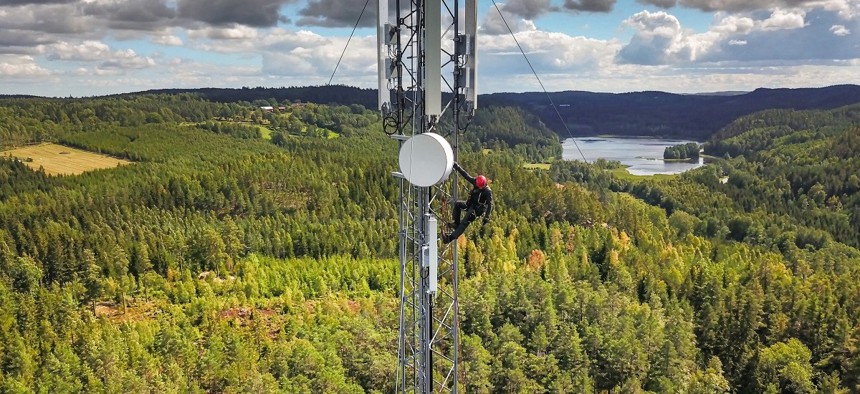Thousands of US Telecom Workers Needed to Deploy Broadband, Watchdog Says

morfous/Getty Images
The Government Accountability Office found “mixed evidence” that there is a shortage of skilled workers needed to carry out broadband deployment efforts.
Thousands of additional telecommunications workers are needed to help expand internet access across the United States, but concerns remain about the ability for broadband infrastructure companies to attract the workers needed to support these enhanced deployment efforts, according to a report released by the Government Accountability Office on Thursday.
GAO analyzed the number of skilled workers “required to build and maintain broadband infrastructure in rural areas based on current and potential need, as well as the wireless infrastructure needed to support 5G wireless technology.” The report was requested as part of the Infrastructure Investment and Jobs Act—which was signed into law by President Joe Biden on Nov. 15, 2021—that included “large increases in federal funding for broadband deployment.”
The report analyzed eight federal programs focused on broadband deployment that have received over $2 million per year in funding and were established in 2020 or 2021. GAO found that, over a 10-year period of sustained funding, “about 23,000 additional workers could be supported by the peak year of funding in 2023, declining to about 9,000 additional workers in 2031 due to the impact of inflation and because funds for some programs must be expended before 2032.”
“The shorter the time-frame over which federal funds are provided, the more workers will be needed per year,” the report added. “Assuming a 5-year funding time period, for example, about 34,000 additional workers would be needed by the peak year of funding in 2023.”
GAO noted that large portions of the country still lack reliable broadband service, necessitating a large-scale deployment of telecommunications workers. The report cited data from the U.S. Census Bureau’s 2015-2019 American Community Survey, which found that “at least 25% of the population in certain areas reported not having internet service.”
Additional research, conducted by the Pew Research Center, also noted that the populations disproportionately affected by a lack of accessible broadband services were “people living in rural areas, low-income areas and some predominantly Black and Hispanic and tribal communities.”
While GAO found that thousands of new workers were needed to help deploy broadband services, the report said there was “mixed evidence on whether there's a shortage of these workers.”
“Our analysis of current population survey data for 2010 to 2021 indicate that, for most of the selected broadband deployment occupations, unemployment rates were below the national average,” GAO said. “Given the low unemployment rate, this indicator suggests the potential for a labor shortage in these occupations. On the other hand, we did not find observable increases in employment levels and wages for the selected occupations.”
GAO said, however, that the broadband stakeholders it spoke with for the report “expressed various concerns about the availability of the skilled telecommunications workers needed to deploy broadband infrastructure and 5G.”
“These concerns included challenges rural areas may face in attracting these workers, the impact of other industries competing for the same labor force and overall trends regarding new entrants into broadband-deployment-related occupations,” the report added.




